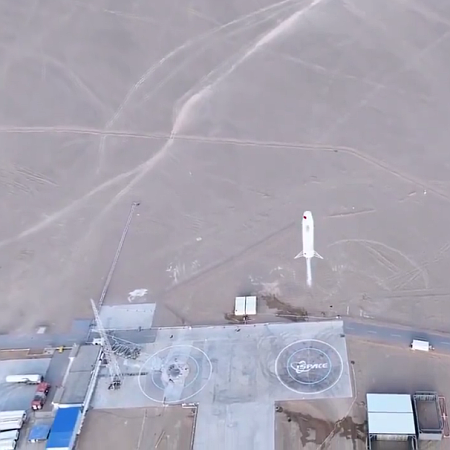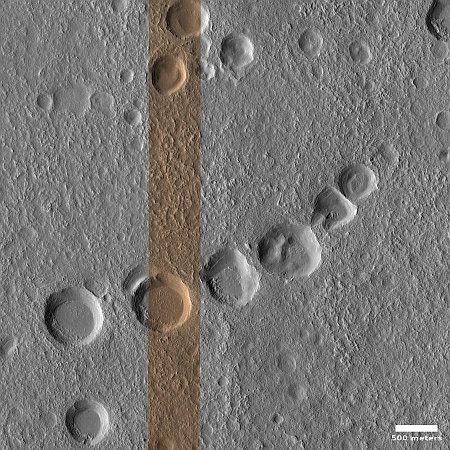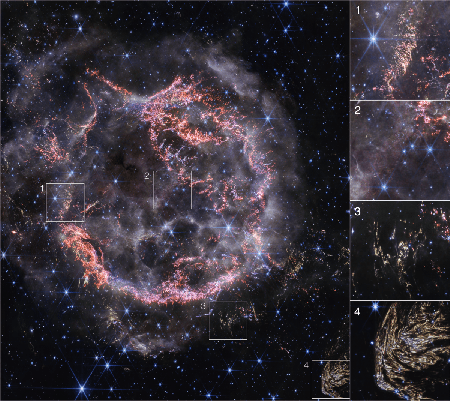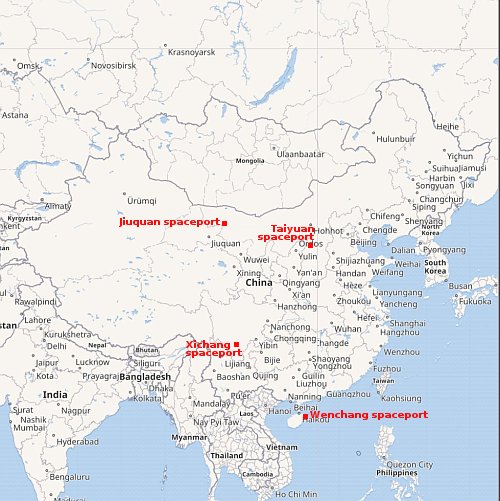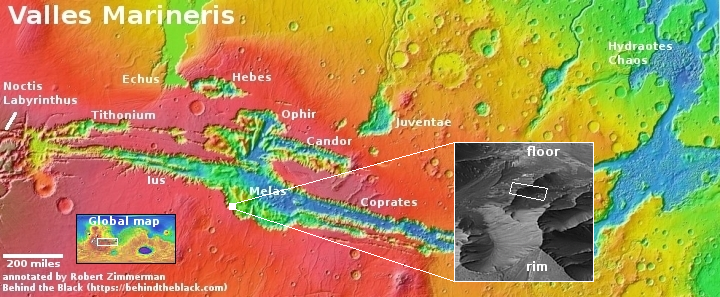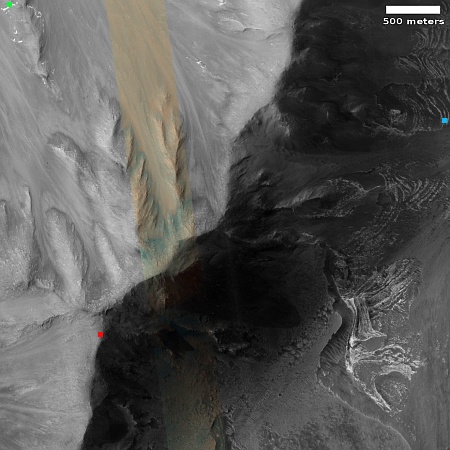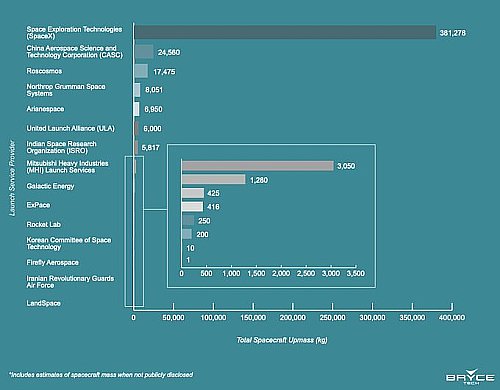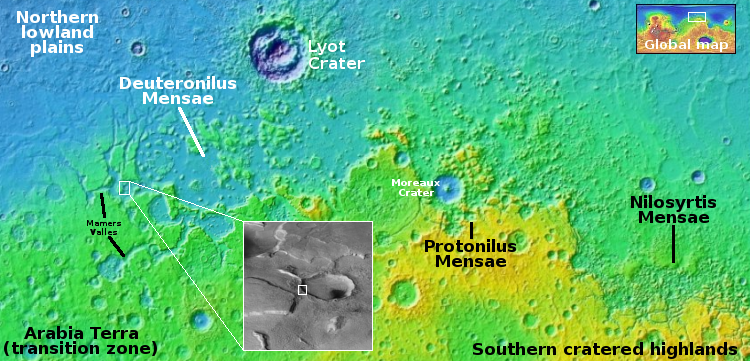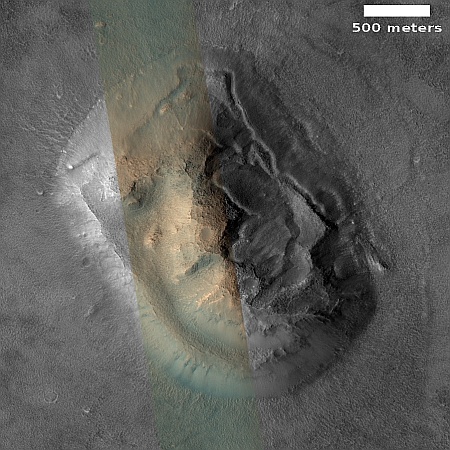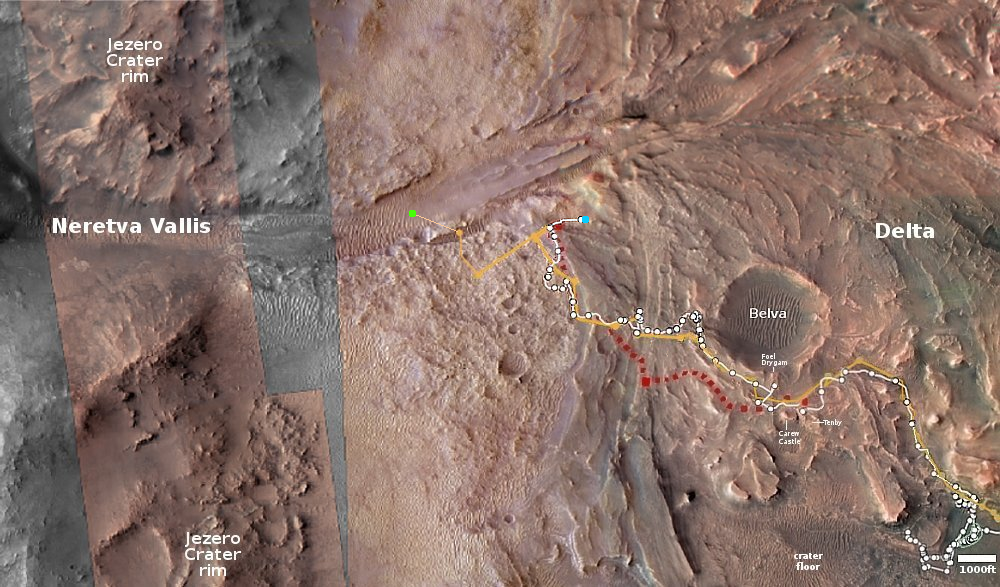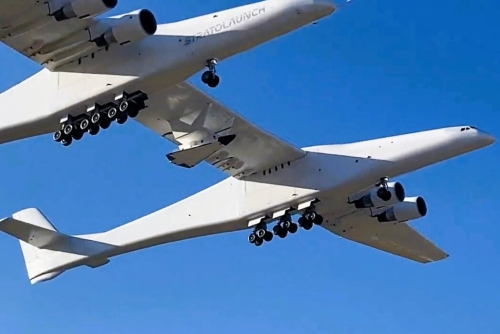Martian crater or mud caldera?
Cool image time! The picture to the right, cropped, reduced, and sharpened to post here, was taken on October 18, 2023 by the high resolution camera on Mars Reconnaissance Orbiter (MRO).
The scientists only call this a “feature,” likely because they don’t wish to guess as to its nature without more data. However, the 2.5 mile wide splash apron around the central double crater certainly merits a closer look. That double crater could be from impact, but it also could be a caldera, with the apron the result of material that flowed from the caldera.
That there appear to be fewer craters on the apron than on the surrounding terrain strengthens this last hypothesis. The apron would have erased many earlier impact craters, resulting in this lower count.
The location however suggests that if this feature was volcanic in origin it might not have been spewing out magma.
» Read more
Cool image time! The picture to the right, cropped, reduced, and sharpened to post here, was taken on October 18, 2023 by the high resolution camera on Mars Reconnaissance Orbiter (MRO).
The scientists only call this a “feature,” likely because they don’t wish to guess as to its nature without more data. However, the 2.5 mile wide splash apron around the central double crater certainly merits a closer look. That double crater could be from impact, but it also could be a caldera, with the apron the result of material that flowed from the caldera.
That there appear to be fewer craters on the apron than on the surrounding terrain strengthens this last hypothesis. The apron would have erased many earlier impact craters, resulting in this lower count.
The location however suggests that if this feature was volcanic in origin it might not have been spewing out magma.
» Read more


